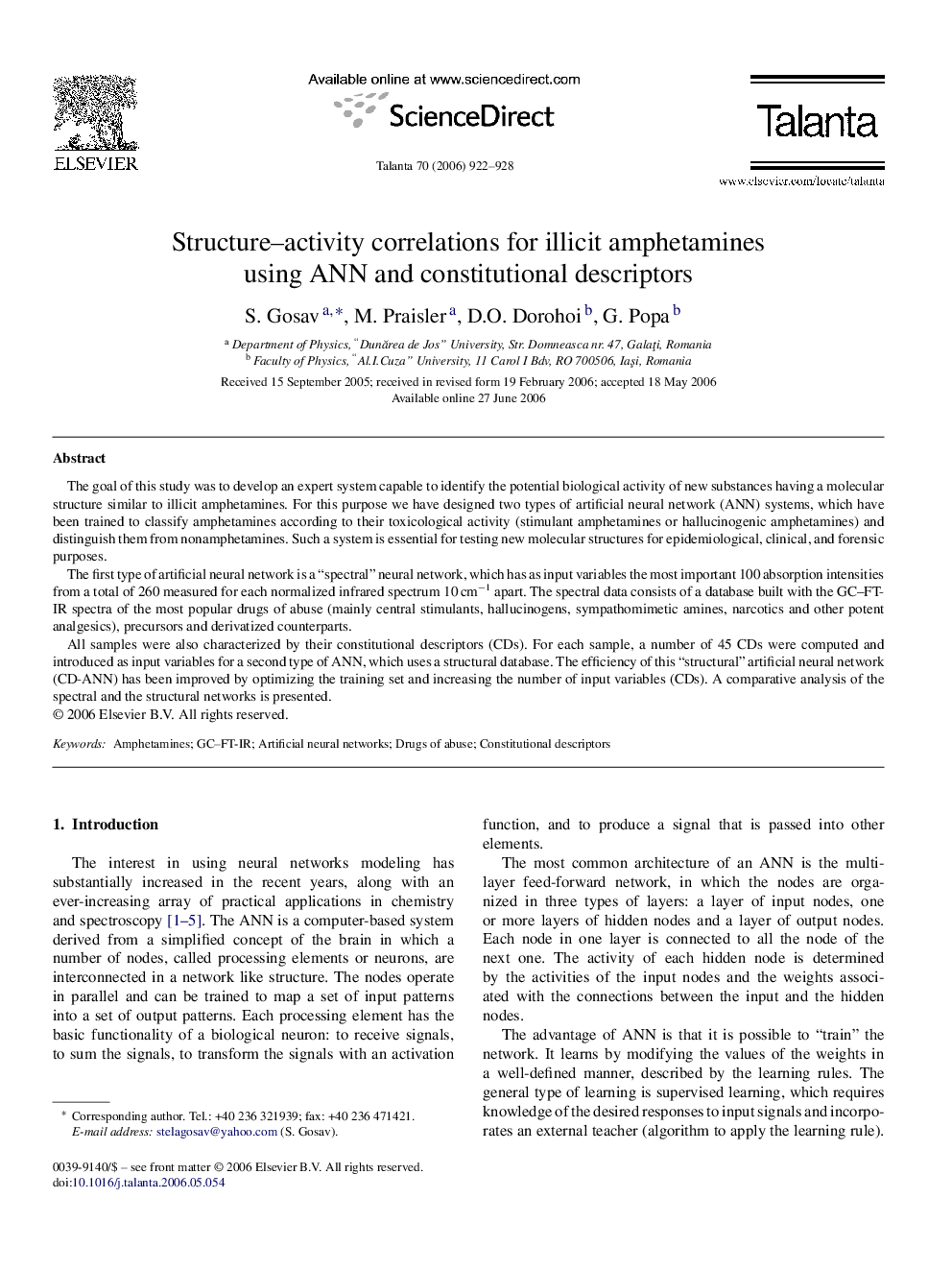| Article ID | Journal | Published Year | Pages | File Type |
|---|---|---|---|---|
| 1245337 | Talanta | 2006 | 7 Pages |
The goal of this study was to develop an expert system capable to identify the potential biological activity of new substances having a molecular structure similar to illicit amphetamines. For this purpose we have designed two types of artificial neural network (ANN) systems, which have been trained to classify amphetamines according to their toxicological activity (stimulant amphetamines or hallucinogenic amphetamines) and distinguish them from nonamphetamines. Such a system is essential for testing new molecular structures for epidemiological, clinical, and forensic purposes.The first type of artificial neural network is a “spectral” neural network, which has as input variables the most important 100 absorption intensities from a total of 260 measured for each normalized infrared spectrum 10 cm−1 apart. The spectral data consists of a database built with the GC–FT-IR spectra of the most popular drugs of abuse (mainly central stimulants, hallucinogens, sympathomimetic amines, narcotics and other potent analgesics), precursors and derivatized counterparts.All samples were also characterized by their constitutional descriptors (CDs). For each sample, a number of 45 CDs were computed and introduced as input variables for a second type of ANN, which uses a structural database. The efficiency of this “structural” artificial neural network (CD-ANN) has been improved by optimizing the training set and increasing the number of input variables (CDs). A comparative analysis of the spectral and the structural networks is presented.
